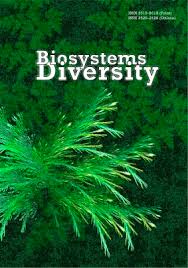Iris sibirica (Iridaceae) on the territory of Western Ukraine
Iris sibirica (Iridaceae) on the territory of Western Ukraine
Author(s): K. I. Scrypec, L. O. Tasenkevich, M. M. SenivSubject(s): Geography, Regional studies, Sociobiology
Published by: Дніпропетровський національний університет імені Олеся Гончара
Keywords: inflorescences; flowers; fruits; seeds; phenology; population; seed productivity;
Summary/Abstract: The state of Iris sibirica L. in the national botanical reserve "The Valley of the Irises" is characterized. In particular, it was found that I. sibirica should be classified in the group of Euro-West Siberian, and not as a Euro-Siberian or even Eurasian species. Phenological rhythms and peculiarities of fruiting have been studied. It is established that the duration of the vegetation period of I. sibirica lasts 187–246 days. The most important stages of the reproductive cycle of I. sibirica (structure of inflorescences, flowers, fruits and seeds, phenology, seed productivity) have been studied. We first discovered that on the inner surface of the flower tube there is a multilayer secretory tissue – perigonal nectar. The fruiting of I. sibirica, which lasts quite a long time: 2–3 months (60–80 days) from June to August, was studied. In this population two ways opening of the capsule were observed. Apis mellifera (Linnaeus, 1758) (honey bee) and Bombus bombus (Latreille, 1802) (bumblebee) are pollinators of I. sibirica in the reserve. The coefficient of seed productivity of I. sibirica was high and quite stable, but despite the high potential and actual seed productivity in the population there is a weak seed recovery, which is associated with high turfing and invasions of members of the phytophagous genus Ceutorhynchus. Their activity dramatically reduces the maturation and dissemination of full-fledged mature seeds due to damage to flowers, capsules and seeds in them. However, the population of I. sibirica in the "The Valley of the Irises" is mature, normal, with a slight predominance of young individuals, which provides it with positive dynamics.
Journal: Biosystems Diversity
- Issue Year: 28/2020
- Issue No: 3
- Page Range: 211-215
- Page Count: 5
- Language: English

